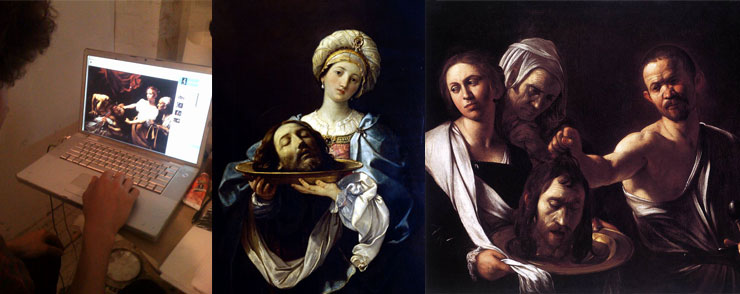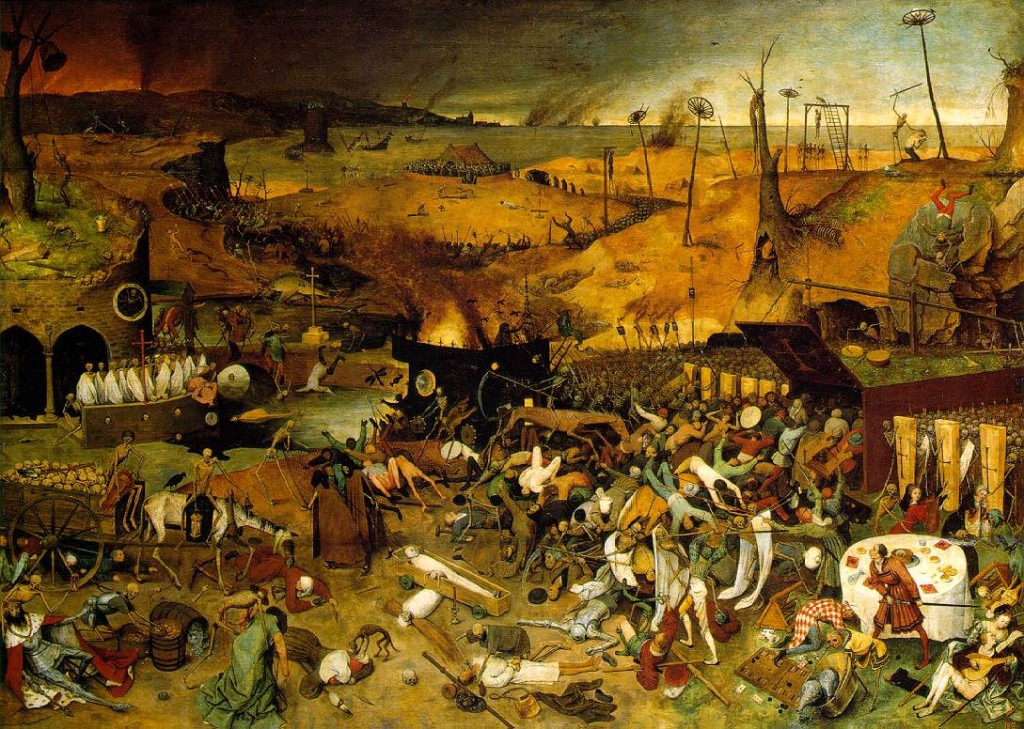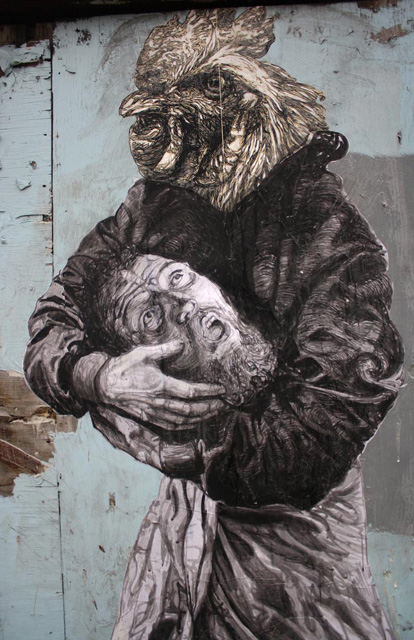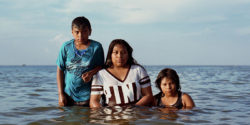Gaia in Brooklyn Studying End of World
Creating a new symbolic vocabulary based on fables, myths, and Biblical stories as well as his own imagination, Gaia plays with tropes and tangents in pursuit of enlightened understanding. A cultural omnivore of sorts, his own understanding is informed as much by Questlove as Caravaggio, Plato and Panda Bear, metaphor and M Arch, aerosol and oil paint. And linoleum. And wheat pastes. And colored pencils. Well past the digital dawn of all-things mashup, Gaia continues to mess with meanings and modalities in search of a new way to communicate messages that are as old as written history. For now his meme is the human cycle of creation and destruction, with an underlying preoccupation with the latter.
A recent visit to his studio space in Brooklyn finds Boy Wander with his laptop on a makeshift table and linoleum scattered across the floor. His new pieces for his show Saturday at Irvine Contemporary Gallery in Washington, DC nearly complete, Gaia talks about the vocabulary of his symbols and their evolving meanings.

- Above is the central trio for the new show. “The Emissary” central figure, imploring us to pay attention, is book-ended by two versions of the be-headed Saint John, influenced by Caravaggio and Guido Reni. Explains Gaia, “And so the whole point of using St. John as a metaphor is that he was like a prophetic messenger who had foretold the coming of the Messiah and then of course he was decapitated. So it was the messenger foretelling the savior – and this is the emissary in the middle telling you to listen. Basically it is to align them with these natural figures which are foretelling the end of the world and how to stop it – but not really.” Animal heads, which Gaia imbues with specific roles, are freely interchanged with human heads as symbols by way of telling a greater story. Gaia (photo © Jaime Rojo)

- In the free-associating symbolism of Gaia, the rabbit head is a stand-in for the lamb of God. Gaia (Detail) (photo © Jaime Rojo)

- In this version of St. John’s head being cradelled, it is interesting to note how Gaia incorporated the faux street art advertisement by musician Roger Waters that is part of a greater campaign of wheate-pasting on the street into the background. Gaia (Detail) (photo © Jaime Rojo)

- Yes, this is the Lamb of God. Gaia (photo © Jaime Rojo)
On the significance of animal heads and their interchangeability, “I wanted to work with these decapitated heads and mix with them with the animal and human heads – hybrids – so the animals are never out of the picture – so again it’s this message of the saviour being killed. Like the thing that was going to save us is massacred by us. So it’s like this cycle of saving, destruction, saving, destruction, not listening, listening. – these different prophecies”.

- “Grandfather”, the print. Gaia (photo © Jaime Rojo)

- Gaia Original Lino cut of “Grandfather” (photo © Jaime Rojo)

- “So this is a print that I had done for Just Seeds for their new project, and I figured it made sense for this show as well. It is regarding over-fishing. So the whole thing is the fish circling, the hole is the fish that are missing, the human hand is holding a dead fish.”Gaia (photo © Jaime Rojo)
Even as war seems perennial, anyone with eyes can tell you that we are living in a darkened time of pushing the earth’s environment to a precipice, and with good reason the younger generations are taking it quite hard. A legacy of poisoned air, water and diminished resources is more frequently on their mind because that is the legacy that’s been left to them. We talked with Gaia about his take on the state of the environment and how it influences him personally, thus creatively.
BSA: So what’s up with this preoccupation with death and destruction in your work?
GAIA: Well, yeah, death and destruction is just like my generations notion that the world is coming to an end and we have to fix something. We’ve inherited all of these problems. “Global Warming” sort of came into being as a real conscious collective awareness as I was growing up. I remember it coming into being and it just taking over mine and my peers lives. I remember (the movie) “Inconvenient Truth” was like the turning point and noone could stop thinking about it. It’s really just about this collective environmental consciousness that it’s inextricably bound to globalization and us not knowing how to necessarily leave that system, how to exit that circle.
BSA: It does seem like your generation is more aware and more concerned with the topic of environmentalism, environmental degradation, apocalyptic visions than any previous generations.
Gaia: Yeah but not necessarily doing anything about it.
BSA: No? There is not an activist sense?
Gaia: Yeah there is an activism but also there’s also a feeling of hopelessness as well. Just the fact that we don’t know how to deal with it.
BSA: How to turn the tide?
Gaia: Yeah how to turn the tide and also how to live alternatively so we’re not affecting the world negatively.
 BROOKLYN STREET ART LOVES YOU MORE EVERY DAY
BROOKLYN STREET ART LOVES YOU MORE EVERY DAY
















